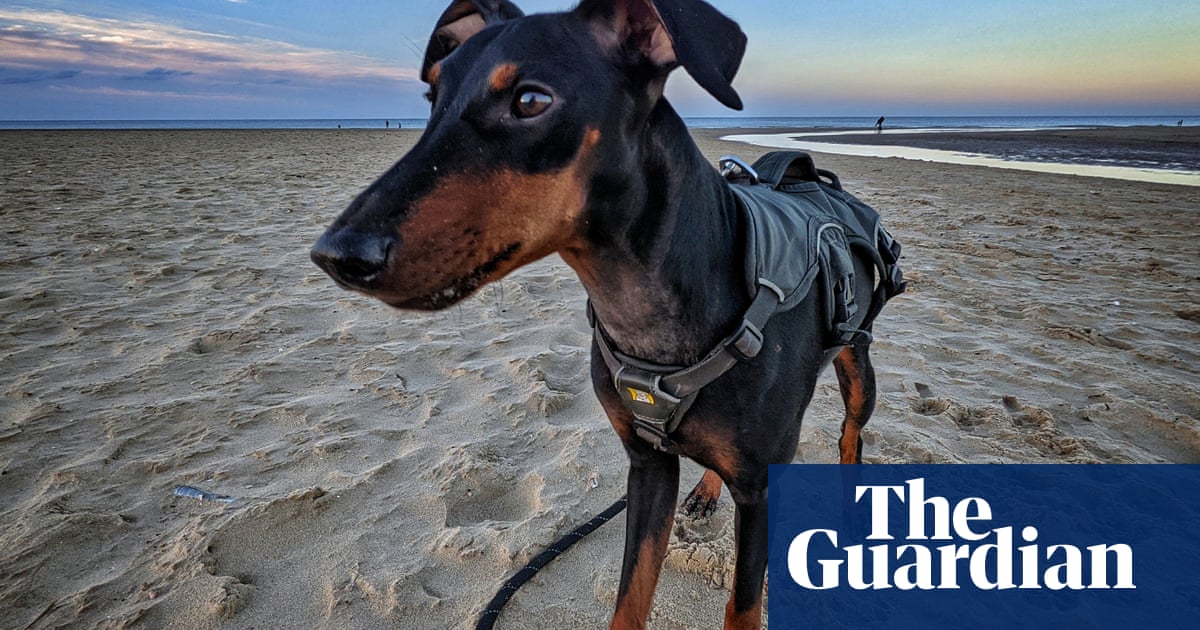
here is a breakfast cafe called Dylan Dog at 7 Craven Road, near Paddington station in west London. To most customers, it is simply another venue for coffee and eggs, wedged into a busy street among the area’s more elegant stucco-fronted terraces and squares.
But to Italians the address is no less magical than Harry Potter’s Platform 9 and 3/4, or Sherlock Holmes’s 221b Baker Street. For No 7 Craven Road is the home of Dylan Dog himself, a fictional investigator of the paranormal, the protagonist of an Italian horror comic book series with more than 60m copies sold worldwide. And yet perhaps Dylan Dog’s biggest uncracked mystery is that, to his neighbours in London, he is almost unknown.
But the Italian comic book author Tiziano Sclavi, 67, who in 1986 created the detective, takes no offence, as he himself has never set foot in the UK.
“I’ve never been to London,” Sclavi told the Guardian in his first interview with foreign press. “I’ve never been on a plane, and I never will. As for the train, with my claustrophobia I’d probably have a heart attack in the Chunnel. I can drive, but I hardly do so any more. I’m even troubled by the 1km journey to the neighbouring town to get my groceries. But in my dreams, I’ve been to London many times.”
Claustrophobia and fear of flying are only a few of the obsessions that Sclavi has transmitted to Dylan Dog, whose adventures have been translated into more than 10 languages. A 30-something former Scotland Yard officer and recovering alcoholic, Dog is a private detective who investigates unusual cases bordering on reality and the paranormal. He’s impulsive, problematic and unsure about himself and the world. His sidekick and trusted best friend is Groucho Marx, inspired by the American comedian, and the two share a house full of monstrous gadgets and a bell that makes a frightening sound.
“I chose seven because it’s a magical number,” says Sclavi of Dog’s address. “And Craven is a dedication to the horror filmmaker and actor Wes Craven. Only years later an illustrator who had lived in London told me that Craven Road really exists.”
Dylan Dog’s London is understandably a bit vague, almost dreamlike, the result of years of study. “In Dylan Dog’s first years, in the 1980s and 90s, it wasn’t easy to find documentation of the places I needed to describe. I consulted several books, but it was difficult to give them to the illustrators, some of whom lived far away. That’s why my early descriptions of London didn’t depict many genuine places, besides Big Ben and London Bridge. It’s all much easier now. All I do is search for an image online and forward the link to the illustrator,” he said. “I must add, however, that I have ‘lived’ in London often, as a fan of Monty Python, Top Gear, Richard Curtis … and also through English literature, music and cinema, which always make me feel at home. Both myself and my wife dream of one day becoming subjects of Her Majesty the Queen.”
Sclavi said setting the horror adventures of Dylan Dog in the land of Frankenstein, Jack the Ripper and Dr Jekyll and Mr Hyde was an obvious choice. “The UK is often imagined as a land of ghosts, fairies and mysteries,” he explains. “And then there’s the fog – fog is one of the symbols of the occult and of fear. Even if recently in Italy there has been a proliferation of authors of thrillers, my country has never been synonymous with the horror genre. I’d set any other sort of story there. And let’s admit it, if my character’s name were Quagliarulo instead of Dylan Dog, who’d buy it?”
The connection between Dylan Dog and the UK isn’t simply a matter of setting; there are countless cinematic and literary references as well, starting with another famous detective who lives at 221B Baker Street, coincidentally less than a mile away from Craven Road.
“Dylan and Sherlock Holmes are very different characters, but they also have much in common,” says Sclavi. “Conan Doyle was fascinated by the occult and the paranormal. I thought of Holmes when Dylan needed to play a musical instrument. I chose the clarinet instead of the violin, which was Holmes’s instrument. And instead of the Seven-Per-Cent Solution, I thought I’d make my character a recovering alcoholic.”
One of Dylan’s catchphrases is also inspired by Holmes: “When all possible hypotheses have been exhausted, what’s left is the impossible, which is my province.”
The physical attributes of Dylan Dog, which is published by Sergio Bonelli Editore, are inspired by the British actor Rupert Everett, who in 1994 played the lead role in the film Cemetery Man, based on Sclavi’s novel Dellamorte Dellamore. His name, Dylan, is inspired instead by the Welsh poet Dylan Thomas. “I read his poems as a boy, and I liked them enormously. And then there was his life as an alcoholic, like mine and Dylan’s.” Aside from a slight relapse in the early 2000s, Sclavi has been sober since 1987.
Sclavi left Milan in the early 2000s to live in a forested estate at the Swiss border and now leaves his home almost exclusively to take his seven dachshunds to the vet.
“For over 20 years, with few exceptions, I haven’t read newspapers or watched the telly,” he says. “I’m virtually uninformed, but the bits of news I do hear are terrifying. It seems to me we live in a horrible world, and in a repulsive country in particular: Italy.”
Despite hardly ever leaving his home, Sclavi has used his character to support an endless array of social causes, such as the fight against Aids, drug abuse and pet abandonment. He recently urged people to stay indoors to halt the spread of Covid-19.
“Dylan loves and protects anyone who is ‘different’, weak, outcast or a migrant. His motto is ‘We are the monsters’; that is, anyone who is so-called normal. Dylan is a defender of inclusion. In short, even a horror comic book can do good things.””












